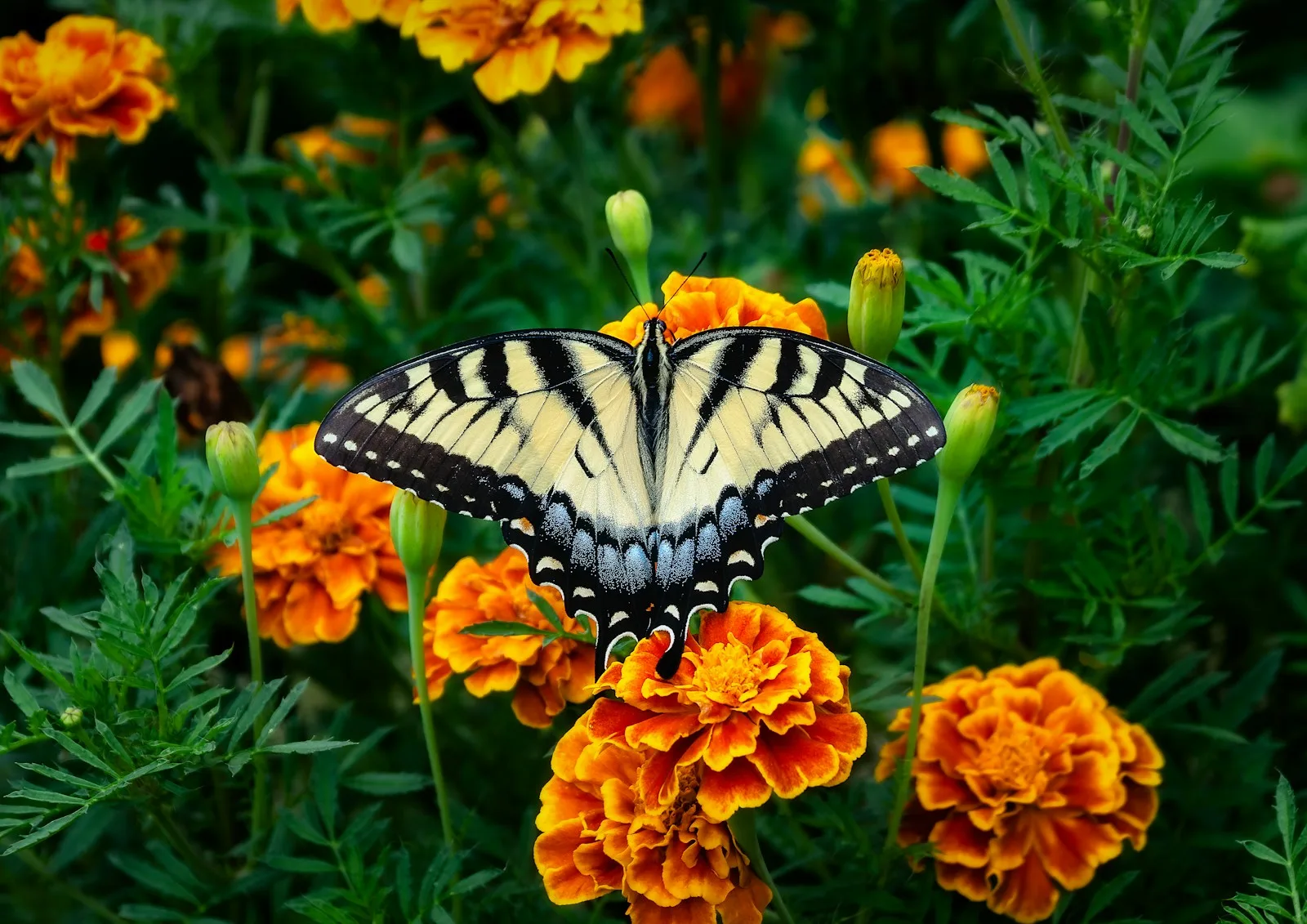Marigolds are some of the most dependable flowers for Florida gardens. With their brilliant orange, yellow, and red hues, they bring warmth and vibrancy to any landscape. But these flowers are more than just eye-catching—they’re also easy to grow, pest-resistant, and beneficial to vegetable gardens. Whether you’re planting them for aesthetics, pollination, or companion planting, this guide will walk you through everything you need to know about marigolds in Florida and how to keep them thriving year-round.
Why Grow Marigolds in Florida?
Marigolds (Tagetes spp.) are well-suited for Florida’s climate because they are heat-tolerant, fast-growing, and adaptable to various soil conditions. They bloom nearly year-round in warm regions and require minimal maintenance, making them an excellent choice for beginners and experienced gardeners alike.
Benefits of Growing Marigolds:
- Pest Control: Marigolds are natural pest deterrents, repelling nematodes, aphids, and mosquitoes.
- Pollinator Attraction: Their bright blooms draw butterflies and bees, increasing pollination in your garden.
- Heat and Drought Resistance: Marigolds can withstand Florida’s intense summer heat.
- Versatile Uses: They can be planted in garden beds, borders, containers, and vegetable gardens.
Best Marigold Varieties for Florida


There are several types of marigolds, but not all perform equally well in Florida’s climate. Here are the best choices for Florida gardeners:
- French Marigolds (Tagetes patula)
- Compact plants with small, bushy growth.
- Heat- and moisture-tolerant.
- Ideal for containers, borders, and companion planting.
- African Marigolds (Tagetes erecta)
- Larger blooms (up to 4 inches wide) and taller plants (up to 3 feet).
- Extremely heat-resistant but less tolerant of excessive rain.
- Best for landscaping and cutting gardens.
- Signet Marigolds (Tagetes tenuifolia)
- Delicate, edible flowers with a citrusy scent.
- Thrives in dry, sandy soils.
- Great for pollinator gardens and edible landscapes.
When to Plant Marigolds in Florida
One of the advantages of growing marigolds in Florida is that they can be planted almost any time of year. However, for best results:
- Spring and Summer: Plant in early spring to ensure blooms throughout summer. These seasons offer the best conditions for rapid growth.
- Fall and Winter: In South Florida, marigolds can be grown year-round. In North and Central Florida, plant marigolds in late summer or early fall to avoid extreme summer heat.
Marigolds grow quickly, with blooms appearing in as little as 45–50 days from planting.
How to Grow Marigolds in Florida

1. Choosing the Right Location
Marigolds thrive in full sun and need at least 6–8 hours of direct sunlight per day. Partial shade can reduce blooming and lead to leggier plants.
2. Soil Preparation
Marigolds aren’t too picky about soil but prefer well-draining, slightly acidic to neutral soil (pH 6.0–7.0). If your soil is sandy or poor, amend it with compost to improve moisture retention and fertility.
3. Planting Marigolds
Marigolds can be grown from seeds or transplants.
- From Seeds:
- Scatter seeds directly in garden beds or containers.
- Lightly cover with soil (about 1/4 inch deep).
- Water gently and keep the soil moist until germination (about 5–7 days).
- From Transplants:
- Space plants 6–12 inches apart for compact varieties and 12–18 inches apart for larger varieties.
- Plant at the same depth as they were in their nursery containers.
- Water thoroughly after planting.
Caring for Marigolds
1. Watering
Marigolds prefer moderate watering. Overwatering can lead to root rot and fungal diseases.
- Water once or twice a week, depending on rainfall.
- Avoid overhead watering to prevent leaf diseases.
2. Fertilizing
Marigolds don’t require heavy feeding, but a light application of fertilizer can enhance blooming.
- Use a balanced fertilizer (10-10-10) once a month.
- Avoid too much nitrogen, as it encourages leafy growth over flowers.
3. Deadheading and Pruning
- Deadhead (remove spent flowers) regularly to encourage continuous blooming.
- Trim back leggy stems to maintain compact growth and improve airflow.
Common Pests and Diseases

While marigolds repel many pests, they are sometimes affected by:
- Spider Mites: Tiny pests that cause yellowing leaves. Treat with insecticidal soap or neem oil.
- Powdery Mildew: A white fungal growth on leaves caused by high humidity. Improve airflow and avoid overhead watering.
- Root Rot: Caused by excessive moisture. Ensure well-draining soil and avoid overwatering.
Marigolds in Vegetable Gardens
Marigolds are excellent companion plants in vegetable gardens. Their strong scent deters harmful insects, making them ideal for growing alongside:
- Tomatoes (repels nematodes and aphids)
- Peppers (protects against root-knot nematodes)
- Beans (keeps Mexican bean beetles away)
- Cucumbers (discourages beetles and aphids)
Planting marigolds around the borders of your vegetable garden creates a natural pest barrier, reducing the need for chemical pesticides.
Growing Marigolds in Containers


Marigolds adapt well to container gardening, making them perfect for patios, balconies, and small spaces.
- Use pots with good drainage (at least 8–12 inches deep).
- Choose compact varieties like French marigolds.
- Water more frequently than garden-planted marigolds, as containers dry out faster.
Marigolds and Florida’s Seasons
Spring & Summer:
- Ideal for planting. Expect strong growth and blooms.
- Keep an eye on watering needs as temperatures rise.
Fall & Winter:
- In North and Central Florida, marigolds can still bloom in mild winters but may decline in hard frosts.
- In South Florida, marigolds thrive year-round.
Why Every Florida Gardener Should Grow Marigolds

Beyond their beauty, marigolds are one of the most versatile and beneficial flowers for Florida gardens. They provide pest control, attract pollinators, thrive in tough conditions, and require minimal effort to maintain. Whether you’re planting them for aesthetics, companion planting, or as a pollinator magnet, marigolds are an easy win for Florida gardeners.
Marigolds are an essential addition to any Florida garden, offering color, resilience, and numerous benefits. With their ability to thrive in heat, deter pests, and attract pollinators, they are one of the most valuable flowers you can plant. Whether in garden beds, vegetable plots, or containers, marigolds will brighten your landscape and improve your garden’s overall health. Start planting today and enjoy their beauty all year long!

